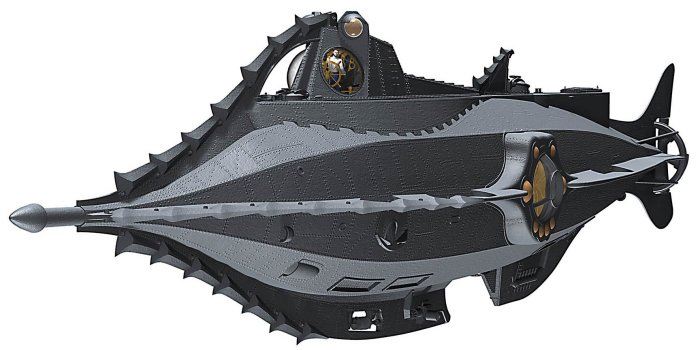

Navy) - was powered by a nuclear reactor and shattered existing speed and dive records as soon as it launched. Light years ahead of anything else in the ocean, the Nautilus - with a hull designation of SSN 571 (Submersible Ship, Nuclear the 571st submarine built by the U.S. Named for the fabled ship in Jules Verne’s 20,000 Leagues Under the Sea, it was in many ways Verne’s fantastic vision come to life. It was launched from the Naval Submarine Base, also in Groton, in 1954. The Nautilus was the world’s first nuclear-powered submarine, built by General Dynamics Electric Boat at its plant in Groton. The previous year, in the late summer of 1957, the Nautilus submarine ventured under the Arctic ice from the Atlantic Ocean. It was a danger Anderson knew only too well. They knew these spikes likely extended downward into the depths of the cold water where they could potentially wreak havoc on a submarine and its crew. As they went, Anderson and Lyon noted places in the ice floe where patches had collided, driving up sharp and jagged obstructions. The plane moved beyond the Bering Strait and above the Chukchi Sea. He watched the icy waters beneath him intently as the plane flew over a desolate stretch of the globe, its engine occasionally hiccuping. After World War II, the Soviet Union flew a plane there and landed on the ice, but in the whole of human history, no water vessel had ever made it there and back, and none had even dared claim the accomplishment.Īnderson hoped to avoid the fate of some of the less fortunate members of this explorers’ fraternity. A year later, Robert Peary also claimed to be the first person to reach the pole, but some also doubt he ever made it.

In 1908, Frederick Cook claimed to have reached the pole, but his claim is widely disputed. DeLong led an attempted voyage north that ended in tragedy after his ship was trapped in ice and many crew members, including DeLong, died. Most had been sent back unsuccessful, defeated by the shifting and unpredictable nature of the ice and confounded by the harsh, almost alien conditions of the region. For generations the North Pole had been a siren’s call for adventurers. They had traveled all this way to study the ice - ice Anderson hoped to conquer in a way no explorer ever had, not from above but from below. There they chartered a single-engine plane and were flown over the Bering Strait, the 60-mile passageway between the Russian mainland in Asia and Cape Prince of Wales, Alaska, the westernmost point in the Americas. Before congressional committees and from lecture podiums he-to use his own words-“took on" all professions that the believed were failing to live up to the standards they professed.From Seattle the men traveled to the tiny Alaskan village of Kotzebue. He was notorious for his caustic comments on the military-industrial complex and for his vigorous criticism of American education.

To the public he was the "father of the nuclear navy," an engineering genius who had developed atomic energy for ship propulsion and for electric power stations. To many of these men he had been an unruly subordinate. In that time he had served five presidents of the United States, a dozen secretaries of defense, fifteen secretaries of the navy, eleven chiefs of naval operations, and seven commission chairmen. For about three decades he had led the navy's nuclear propulsion program, a joint effort of the Navy Department and the Atomic Energy Commission. Rickover the place a corner office in the third floor of National Center 2, one of a number of drab multistory buildings near National Airport in Arlington, Virginia the time an overcast Saturday afternoon in the fall of 1974. Francis Duncan Your job is to show what it takes to get a job done." The speaker was Admiral Hyman G.


 0 kommentar(er)
0 kommentar(er)
